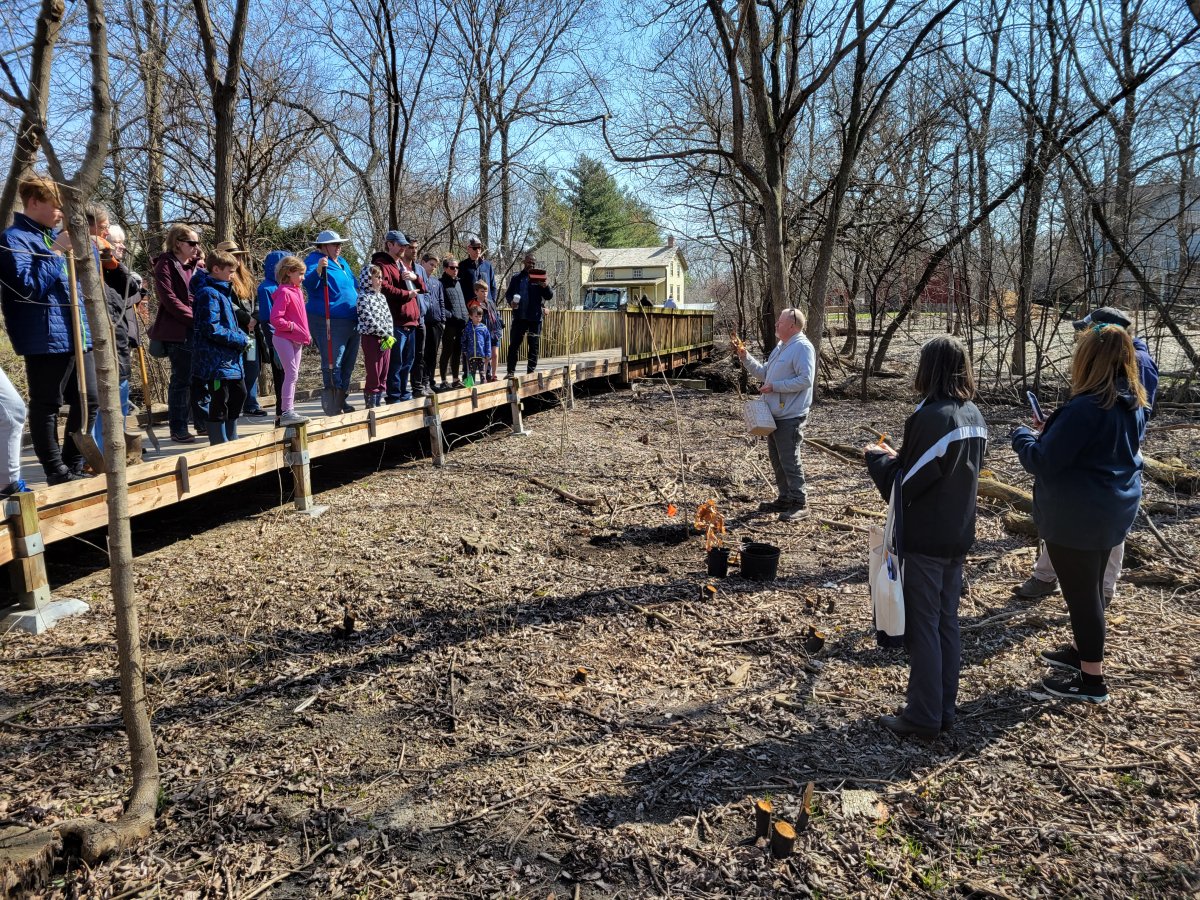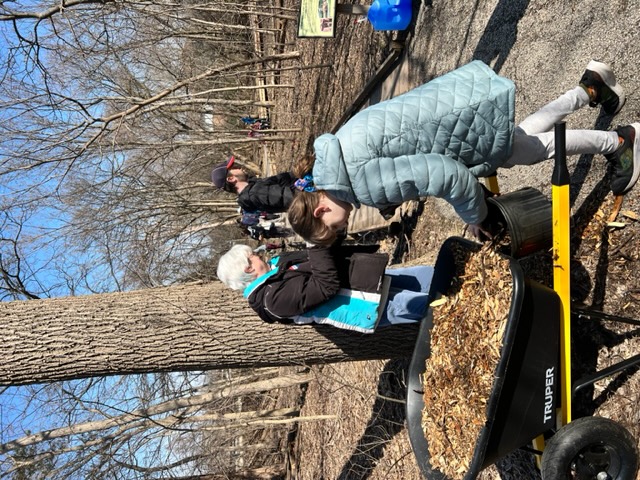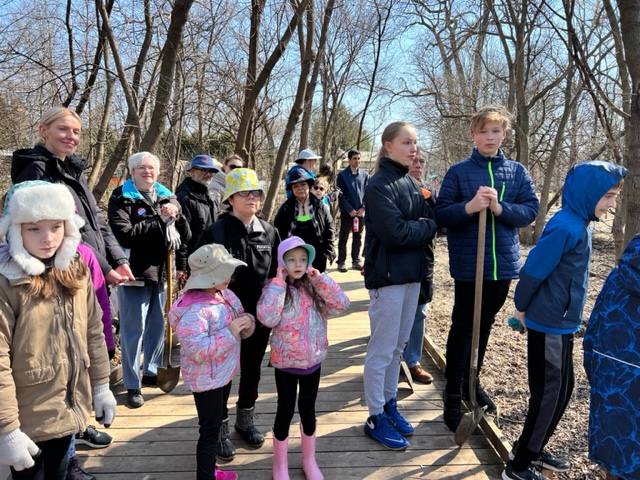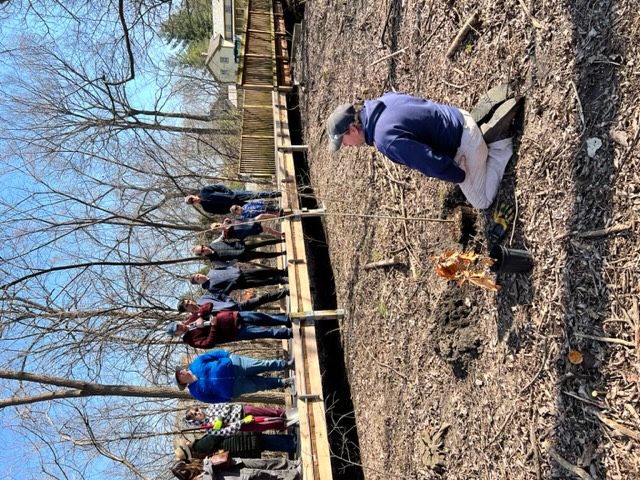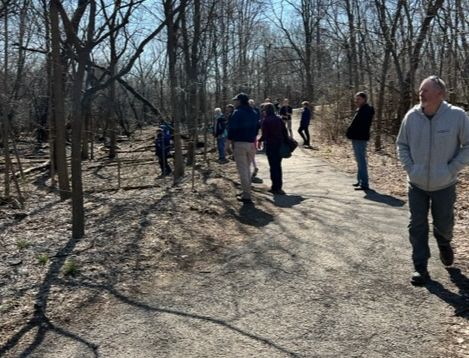
Soil & Water Conservation
District Conservation Activities
We are pleased to share stories on this page of conservation activities in our district.
Partners for Conservation Cost-Share Programs
Cost Share Sign-Up-North Cook County SWCD Conservation Practices Include: Rain Gardens, Conservation Cover (Pollinator), Cover Crops, No-Till/Strip-Till Planting, Water and Sediment Control Basins, and Critical Area Planting
Deadline April 15, 2025. For practice information and applications call 224-875-7580 Or email: admin@northcookswcd.org
Program brochure
Program brochure
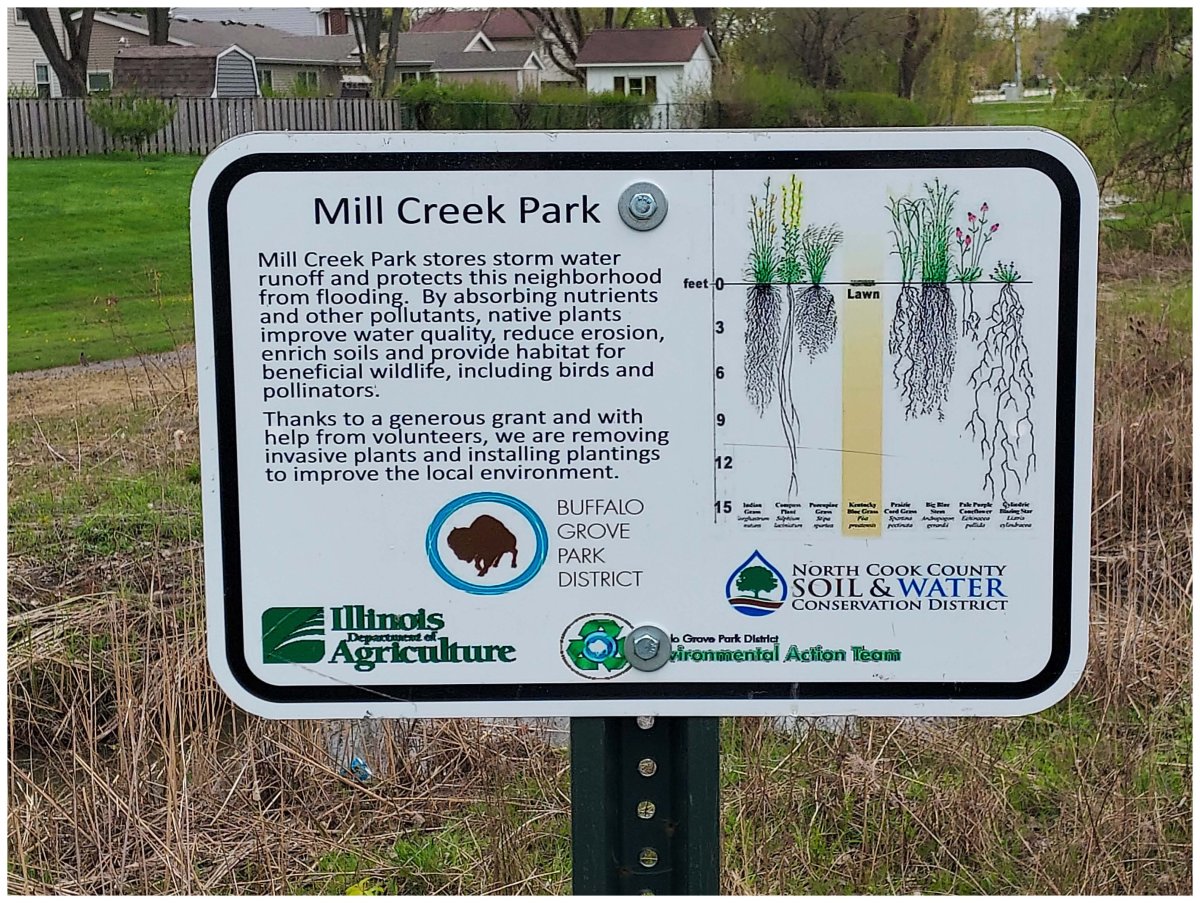
Mill Creek Restoration- Partners for Conservation
Posted May 2023
Mill Creek Park is a seven-acre park in Buffalo Grove Illinois. It combines a playground and mowed turfgrass areas with a stream corridor for McDonald Creek and a wetland/prairie detention basin. Mill Creek Park is one of the largest parks in the Cook County portion of Buffalo Grove and is enjoyed by neighbors and passers-by on Arlington Heights Road.
The park is built around a detention storage basin which provides stormwater storage capacity for the Mill Creek subdivision. When the basin was installed, native plants were established in the basin and along the streambanks of McDonald Creek, which flows through the park. Invasive brush has invaded the streambanks, along with cattails and other undesirable vegetation in the basin. Very little maintenance has been conducted in recent years but that is changing in recent years, as the Buffalo Grove Park District has established a land management crew and partnered with the Buffalo Grove Environmental Action Team to maintain natural areas as “green infrastructure.”
A local scout, Owen Green, recently completed an Eagle Scout Service project to remove invasive brush and replant 100 linear feet of the streambanks with plugs and seeds of native plants. These native plants will colonize the bare soil that was previously under the thicket of brush and will resist reinvasion by invasive species. Owen’s volunteers also overseeded with a seed mix containing native pollinator plants over the area where the plugs were installed.
The next steps in this project involve extending the work across all of the natural areas on the park, which total nearly five acres. First, invasive species control is underway. This summer, the basin was treated for teasel (Dipsacus spp., Canada thistle (Cirsium arvense), and purple loosestrife (Alatus salicaria). Future work is planned to treat the cattails along the east side of the park and replace them with native sedges and other aggressive native plants that will resist reinvasion. Second, brush control for woody species including common buckthorn (Rhamnus cathartica) and oriental honeysuckles (Linicera spp.) will be expanded to the rest of the streambanks. These areas will be seeded after control is established. Third, turfgrass will be treated with herbicide application to prepare it for seeding later this fall.
Each of these areas will be seeded and reestablished in native vegetation that will support populations of pollinators and other wildlife. Native seed mixes will add species richness and capture many other benefits of native vegetation, in addition to providing habitat for wildlife. These benefits include soil building and carbon capture in deep root systems, infiltration of storm water, reduced erosion and sedimentation. and an improved viewscape for park visitors.
In the most degraded and overgrown areas, the Park District will engage a contractor to remove brush and dense stands of cattail and giant reed. Herbicide treatments will allow these areas to be revegetated with plugs and seeds of native sedges and wetland plants that have been selected to spread rapidly and outcompete invasive species.
Once restored through the management steps identified above, maintenance will be jointly conducted by park district staff and volunteers. Vegetation will be monitored annually for five years after completion of the currently planned project work and additional maintenance steps will be taken as needed.
Community engagement is a key part of this project. The neighbors of this park have been allies in assisting in restoration work and planting the garden bed under the park sign and will assist in the work through the auspices of the Buffalo Grove Environmental Action Team.
Mill Creek Park is a seven-acre park in Buffalo Grove Illinois. It combines a playground and mowed turfgrass areas with a stream corridor for McDonald Creek and a wetland/prairie detention basin. Mill Creek Park is one of the largest parks in the Cook County portion of Buffalo Grove and is enjoyed by neighbors and passers-by on Arlington Heights Road.
The park is built around a detention storage basin which provides stormwater storage capacity for the Mill Creek subdivision. When the basin was installed, native plants were established in the basin and along the streambanks of McDonald Creek, which flows through the park. Invasive brush has invaded the streambanks, along with cattails and other undesirable vegetation in the basin. Very little maintenance has been conducted in recent years but that is changing in recent years, as the Buffalo Grove Park District has established a land management crew and partnered with the Buffalo Grove Environmental Action Team to maintain natural areas as “green infrastructure.”
A local scout, Owen Green, recently completed an Eagle Scout Service project to remove invasive brush and replant 100 linear feet of the streambanks with plugs and seeds of native plants. These native plants will colonize the bare soil that was previously under the thicket of brush and will resist reinvasion by invasive species. Owen’s volunteers also overseeded with a seed mix containing native pollinator plants over the area where the plugs were installed.
The next steps in this project involve extending the work across all of the natural areas on the park, which total nearly five acres. First, invasive species control is underway. This summer, the basin was treated for teasel (Dipsacus spp., Canada thistle (Cirsium arvense), and purple loosestrife (Alatus salicaria). Future work is planned to treat the cattails along the east side of the park and replace them with native sedges and other aggressive native plants that will resist reinvasion. Second, brush control for woody species including common buckthorn (Rhamnus cathartica) and oriental honeysuckles (Linicera spp.) will be expanded to the rest of the streambanks. These areas will be seeded after control is established. Third, turfgrass will be treated with herbicide application to prepare it for seeding later this fall.
Each of these areas will be seeded and reestablished in native vegetation that will support populations of pollinators and other wildlife. Native seed mixes will add species richness and capture many other benefits of native vegetation, in addition to providing habitat for wildlife. These benefits include soil building and carbon capture in deep root systems, infiltration of storm water, reduced erosion and sedimentation. and an improved viewscape for park visitors.
In the most degraded and overgrown areas, the Park District will engage a contractor to remove brush and dense stands of cattail and giant reed. Herbicide treatments will allow these areas to be revegetated with plugs and seeds of native sedges and wetland plants that have been selected to spread rapidly and outcompete invasive species.
Once restored through the management steps identified above, maintenance will be jointly conducted by park district staff and volunteers. Vegetation will be monitored annually for five years after completion of the currently planned project work and additional maintenance steps will be taken as needed.
Community engagement is a key part of this project. The neighbors of this park have been allies in assisting in restoration work and planting the garden bed under the park sign and will assist in the work through the auspices of the Buffalo Grove Environmental Action Team.
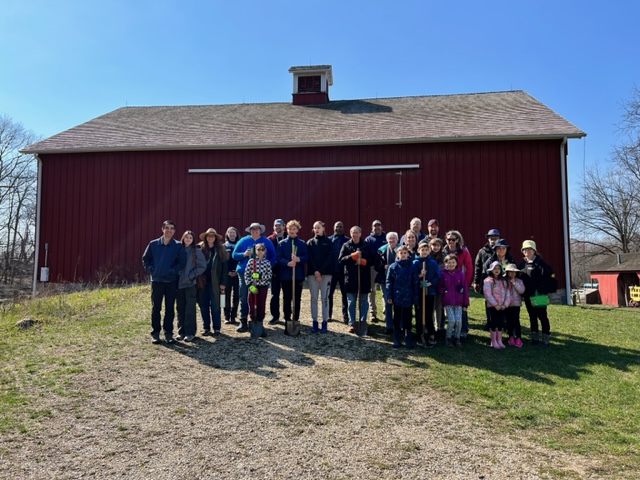
North Cook County Soil & Water Conservation District Participates in Statewide Tree Planting Project
Posted May 2023
Illinois Extension 4-H and the Association of Illinois Soil and Water Conservation Districts (AISWCD) Forestry Committee have partnered to plant Oak trees. To build on the Extension 4-H Green Communities Tree Program, funding partners were sought and volunteers from across the state were recruited. After a successful 2022 planting campaign across 31 Illinois Soil and Water Conservation Districts, the Spring 2023 planting will include 38 Illinois counties; from Winnebago in the north to Massac in the south and Edgar on the east to Adams on the west. Funding for the two years of tree planting was provided by Illinois Forestry Development Council, University of Illinois Extension Foundation and AISWCD. The statewide tree planting initiative is coordinated at the local level by Extension 4-H, and the local Soil and Water Conservation District. Each participating District is supplied with 25 Oak trees to be planted on a public site within the District. North Cook County SWCD is one of this year’s 38 statewide participants. A total of 950 four-foot-tall potted Oak trees supplied by Forrest Keeling Nursery of Elsberry, Missouri will be planted this spring. Throughout Illinois and the Midwest, Oak forests are diminishing and being overtaken by less desirable Beech and Maple. It is projected that some Illinois Oak/Hickory forests particularly in southwest Illinois, will be completely overtaken by Beech and Maple by 2050 if management practices aren’t soon initiated. The emphasis of this partnership tree planting project is to raise awareness of our diminishing Oak forests and to educate youth and community members on the value of native Oak forests and Oak trees to Illinois. Each participating SWCD will receive 10 White Oak, 10 Red Oak, and 5 Bur Oak with the goal of creating “mini” Oak savannas across the state.
The actual planting of the Oak savannas is being done by local 4-H members and volunteers. North Cook County SWCD chose the Spring Valley Nature Center / Volkening Heritage Farm in Schaumburg as their planting site. Planting occurred on Saturday, April 8, 2023 at 10am with the following team effort:
Illinois Extension 4-H and the Association of Illinois Soil and Water Conservation Districts (AISWCD) Forestry Committee have partnered to plant Oak trees. To build on the Extension 4-H Green Communities Tree Program, funding partners were sought and volunteers from across the state were recruited. After a successful 2022 planting campaign across 31 Illinois Soil and Water Conservation Districts, the Spring 2023 planting will include 38 Illinois counties; from Winnebago in the north to Massac in the south and Edgar on the east to Adams on the west. Funding for the two years of tree planting was provided by Illinois Forestry Development Council, University of Illinois Extension Foundation and AISWCD. The statewide tree planting initiative is coordinated at the local level by Extension 4-H, and the local Soil and Water Conservation District. Each participating District is supplied with 25 Oak trees to be planted on a public site within the District. North Cook County SWCD is one of this year’s 38 statewide participants. A total of 950 four-foot-tall potted Oak trees supplied by Forrest Keeling Nursery of Elsberry, Missouri will be planted this spring. Throughout Illinois and the Midwest, Oak forests are diminishing and being overtaken by less desirable Beech and Maple. It is projected that some Illinois Oak/Hickory forests particularly in southwest Illinois, will be completely overtaken by Beech and Maple by 2050 if management practices aren’t soon initiated. The emphasis of this partnership tree planting project is to raise awareness of our diminishing Oak forests and to educate youth and community members on the value of native Oak forests and Oak trees to Illinois. Each participating SWCD will receive 10 White Oak, 10 Red Oak, and 5 Bur Oak with the goal of creating “mini” Oak savannas across the state.
The actual planting of the Oak savannas is being done by local 4-H members and volunteers. North Cook County SWCD chose the Spring Valley Nature Center / Volkening Heritage Farm in Schaumburg as their planting site. Planting occurred on Saturday, April 8, 2023 at 10am with the following team effort:
- · (AISWCD) Forestry Committee
- · University of Illinois Extension Foundation
- · Clever Clovers 4-H Club · Eco Buds 4-H Club
- · Village of Schaumburg
- · North Cook County Soil & Water Conservation District

